Traditionally goat has served as a source of livelihood and financial security to a large section of society, mainly comprising resource‐poor people. In the present scenario of changing agro‐climatic conditions, this small ruminant farm animal has tremendous potential to be projected as the future animal for rural and urban prosperity. Backyard goat rearing is steadily turning into the fast-growing livestock industry in the country.
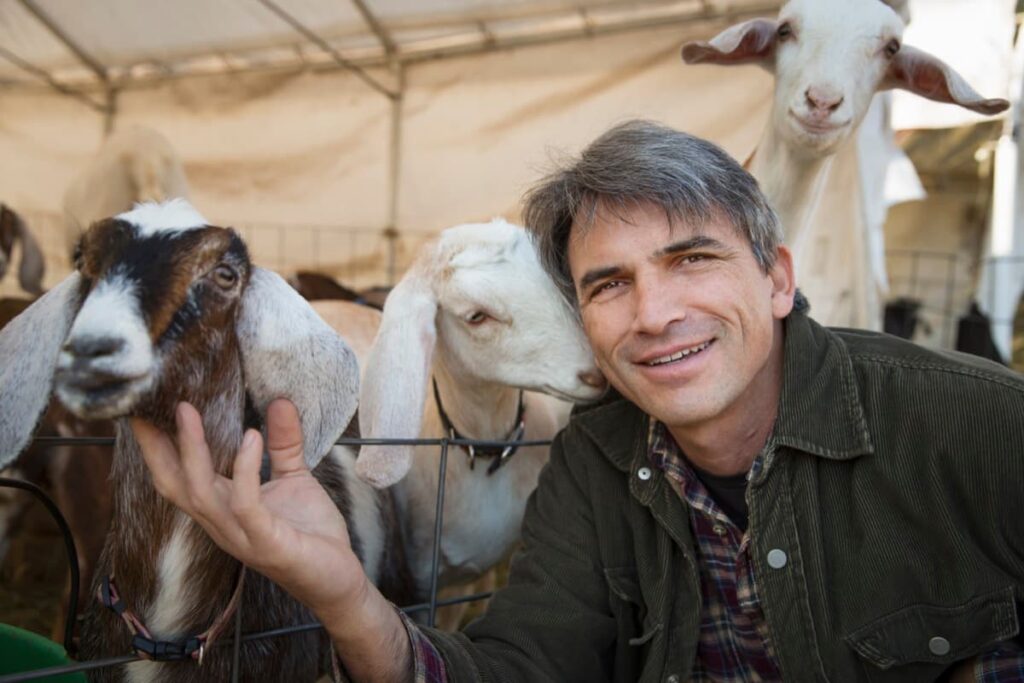
Goat husbandry in India is essentially an endeavor of millions of smallholders who rear animals on crop residues and common property resources. The smallholders produce milk, meat, fiber, skin, etc., for the community with no capital, resource, or formal training. More often, goats are reared for meat production, but they also serve as a ready source of milk to meet the family’s requirements.
Sustainable Goat Farming
Thins to Remember
Selecting the goats
Goats must be healthy and lively. However, before procuring, it is better to check with the local government about regulations. While procuring, it is advisable to get two goats. Goats are social animals and need company. They would try to escape if kept in solitary confinement. Hence at least two goats must be kept in enclosures.
Male: female ratio
Goats are of three types: (i) Females or does, (ii) Uncastrated males or bucks, (iii) Castrated males or wethers. For milk production, it is not necessary that bucks must impregnate the does. Ideally, one buck to every 30 does is a healthy ratio for goat farms.
Age of goats
Younger goats around eight weeks old are cheaper and friendlier to procure than older goats. However, these younger goats need care for about a year or two. Following this period, they can be bred, sold as meat, or used for milk production.
Choosing the right breed
The goat breeds available in India are numerous. However, it is important to note that not all goats are suitable for commercial production. India has some goat breeds that are highly productive and suitable for commercial farming.
In case you missed it: How to Care for Dairy Goats: Shelter/Housing, Fencing, Feeding, and Disease Control
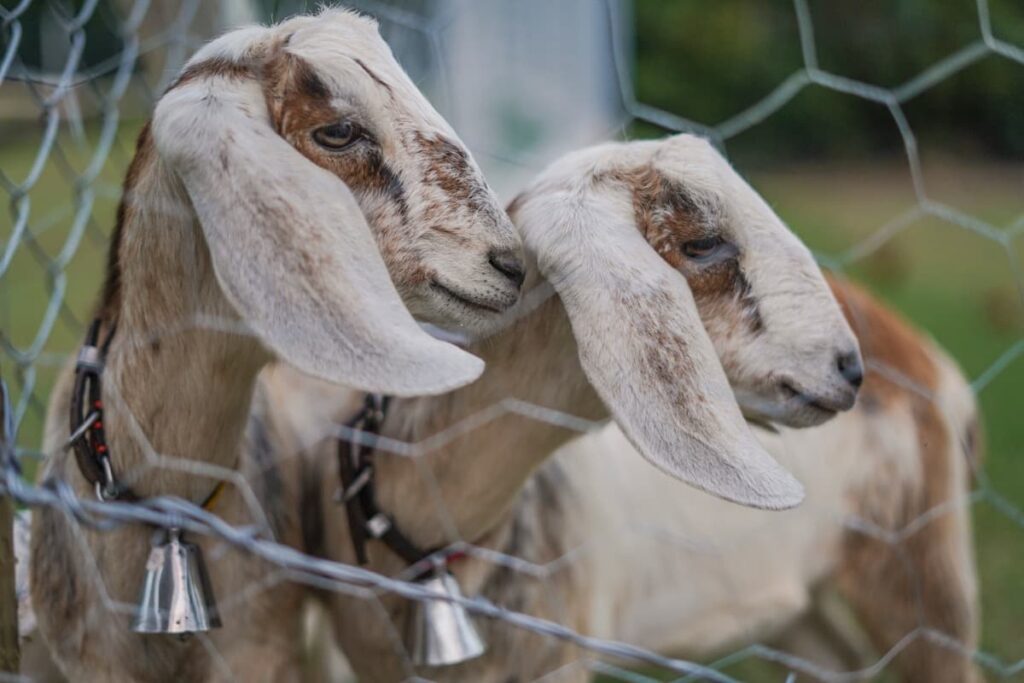
- Jamunapari Goat: India’s native goat breed is the Jamunapari goat. This goat produces a lot of milk and meat. But they are raised mainly for their high milk production capacity. A female goat can produce about 2-3 liters of milk daily. An adult male weighs about 65-90 kg, and a female goat weighs about 40-60 kg.
- Boer Goat: Boer goats are South African breeds that can be farmed in India. Their meat production makes them a good breed for meat producers. An adult Boer goat weighs about 110-115 kg, and a female goat weighs about 90-100 kg.
- Black Bengal Goat: The Black Bengal goat is native to Bangladesh. Bangladesh considers this goat breed to be an important small livestock breed. They are excellent for producing meat, milk, skin, and fiber. This goat breed can adapt to almost all types of climate. There is a great demand for their meat and milk because they are very tasty.
- Beetal Goat: The beetal goat is a native Indian breed of goat. They are a highly milk-productive goat breed. Also suitable for high meat production. They can produce about 2.5-4 liters of milk daily. An adult male goat weighs about 65 kg, and a female about 45 kg.
- Saanen Goat: Swiss Saanen goats are dairy goats. However, it is suitable for commercial milk production in India. Like Jamunapari and Alpine goats, they can produce a large amount of milk. Their daily milk production is about 3.8 liters. An adult male Saanen goat weighs between 70 and 90 kilograms, while a female weighs between 60 and 70 kilograms. Breeds such as Malabari, Black Bengal, Jamunapuri, Osmanabadi, and others, produce very rich milk and meat. Therefore, both milk and meat are produced from them. It is very common to raise breeds like Cashmere or Angora for their hair since it is used as a fabric.
In case you missed it: Contract Goat Farming in India: How to Earn an Extra Income from this Long-Term Investment

Business Plan to Start Goat Farming
In India, goat farming costs are determined by how you start your goat farming project. It all depends on what your goat-farming business plan is. Depending on how many goats you want to start with, determining the cost of the goat farming project is also a factor. As a beginner, you may choose to start with ten female goats, or you may choose to start with 100 female goats; it is entirely up to you.
- Step 1: First, think about how much money you have; otherwise, you can apply for a goat farming loan. Government is very serious about enhancing farmers’ conditions and giving loans easily based on your land.
- Step 2: Make a shed for the number of goats you are planning for and also plan for their upcoming kids.
- Step 3: The best way to provide green fodder to your farm is to grow it nearby so you can easily provide it. It is good for goats to eat a variety of green fodders. Therefore, growing two or three types of green fodder is a good idea.
- Step 4: The number of goats you plan should be under goats under 50 is the best number for beginners.
- Step 5: After coming goats on the farm, vaccinate them properly to prevent their upcoming disease.
In case you missed it: Common Goat Diseases, Symptoms, and Treatment: Check How this Guide Helps Goat Farmers
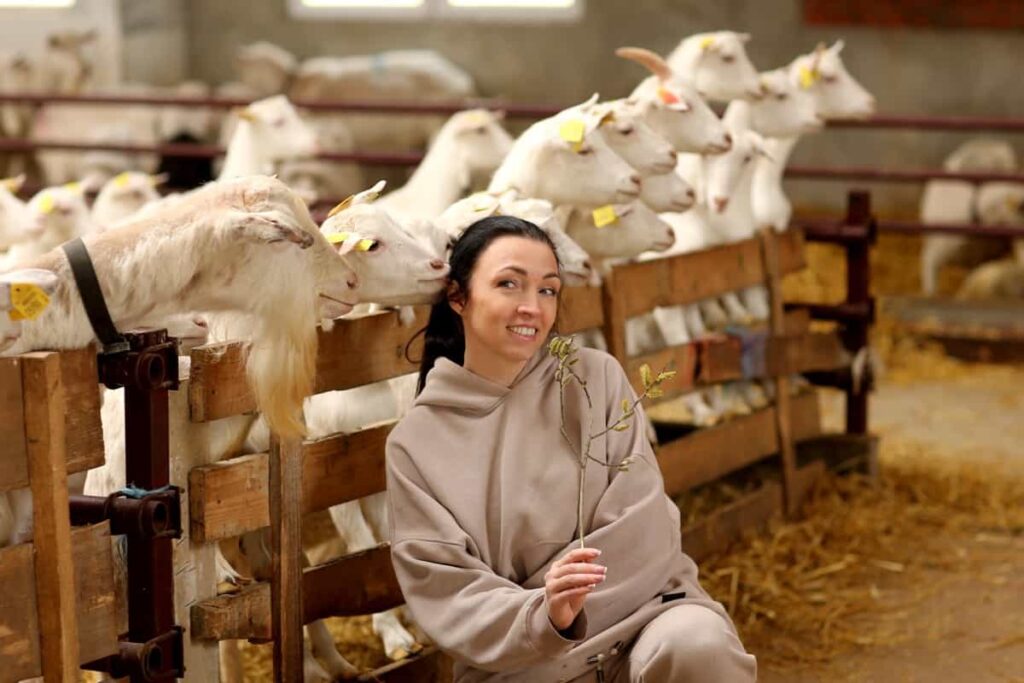
Housing Facilities and Management
A house’s primary purpose is to protect the animal from the sun, wind, and rain. There must be a certain elevation at which the house will be built so that there will not be any problems with water logging in the future. For the construction of houses, local materials such as elephant grass, paddy straw, bamboo, wood, etc., are used that can be found locally. Small units do not require elaborate housing arrangements to meet their needs. There must be a good amount of ventilation in the goat sheds.
The slope should be designed so that water can easily drain away from it and that it is easy to clean the area. If the doe is housed in a group, then 1.8 square meters of floor space must be provided for does, while for the bucks, 2.4 square meters of floor space must be provided. A design area of 1.8 X 1.8 sq mt will be sufficient to accommodate ten kids. There is, however, a need to avoid overstocking to avoid cramped spaces and a sense of suffocation due to overcrowding. Since diseases spread easily among goats, it is extremely important to quarantine sick animals as soon as possible.
Feeding Management in Goat Farming
When goats are fed a well-balanced and nutritious diet, they will be able to grow well and produce as much as possible. There is always a need to ensure that the food they consume contains all the necessary ingredients. To be successful in raising goats today, most successful goat farmers feed their goats 12% to 18% protein-containing feeds. There should be a proper ratio between vitamins, minerals, and other ingredients necessary for the recipe.
In case you missed it: Tips to Start a Goat Farming Business: Check How this Guide Helps Beginners

Make sure there is a sufficient supply of green grasses or other green foods available at all times. Food that is contaminated or expired should never be fed to them. It is important to make a place for grazing or pasture for the animals to produce more. Assuring that enough clean and fresh water is available for the goat daily and providing good food is crucial. Goats are undoubtedly meticulous eaters and are more tolerant of bitter tastes than other animals.
This way, they can survive on agricultural waste, by-products, and other materials. Further, they are also stronger than other roofing materials and, as a result, can withstand all kinds of weather conditions. In addition to their tongues being adapted for grazing, their upper lips are also movable. This allows them to graze on extremely short grasses, bushes, shrubs, and extremely short trees.
In addition to grains like lentils, wheat, and maize, goats should also be fed leguminous fodder and grains such as pulses, wheat, and corn. Leguminous crops such as oats, barley, rye, and ryegrass are generally preferred over straw or maize silage as fodder. Further, they require a feed that contains at least 14-15% protein and high levels of minerals, such as iodized salt, bone meal, zinc oxide, ferrous carbonate, high-grade limestone, copper sulfate, and vitamins.
A grower will receive 100 grams of concentrate mixture every day, while a buck, doe, and adult does will receive 200-250 grams of concentrate mixture every day. On average, each goat consumes 5 to 7 kg of green fodder and a liter of water per day. Statistically speaking, one acre of fodder will feed 35 goats for the entire year.
Health Care of Goats
It is important for a commercial goat farming business to access veterinary services in India to establish a sustainable business. It is, therefore, important to ensure that your goats receive proper veterinary care. Ensure that you always maintain all the necessary vaccines and medicines on your farm. You will be able to address any problems if anything goes wrong and maximize your production from commercial goat farming in India.
- A minimum of once a month, the sheds must be thoroughly washed and disinfected to prevent disease.
- In order to keep the food and water managers clean, they must be cleaned regularly.
- There is a high risk of goats becoming infected with endoparasites. As a result, deworming must be done every six months to prevent parasites from spreading.
- During the breeding season, does are dewormed just before breeding, while kids are dewormed every month.
- To avoid lice, ticks, mites, etc., animals must be regularly sprayed with ectoparasitic drugs like acaricides to eliminate them.
- Regular vaccinations are necessary to prevent diseases such as goat pox, plague, FMD, etc., from spreading. Salmonellosis and brucellosis are zoonotic diseases that must be prevented since they are infectious and can easily spread.
- Stray animals mustn’t be allowed to enter the farm to prevent the spreading of infectious diseases. Whenever a sick goat is detected, it must be isolated as soon as possible and proper medication must be administered as soon as possible.
In case you missed it: Common Sheep Diseases, Symptoms, and Treatment: Check How this Guide Helps Sheep Farmers
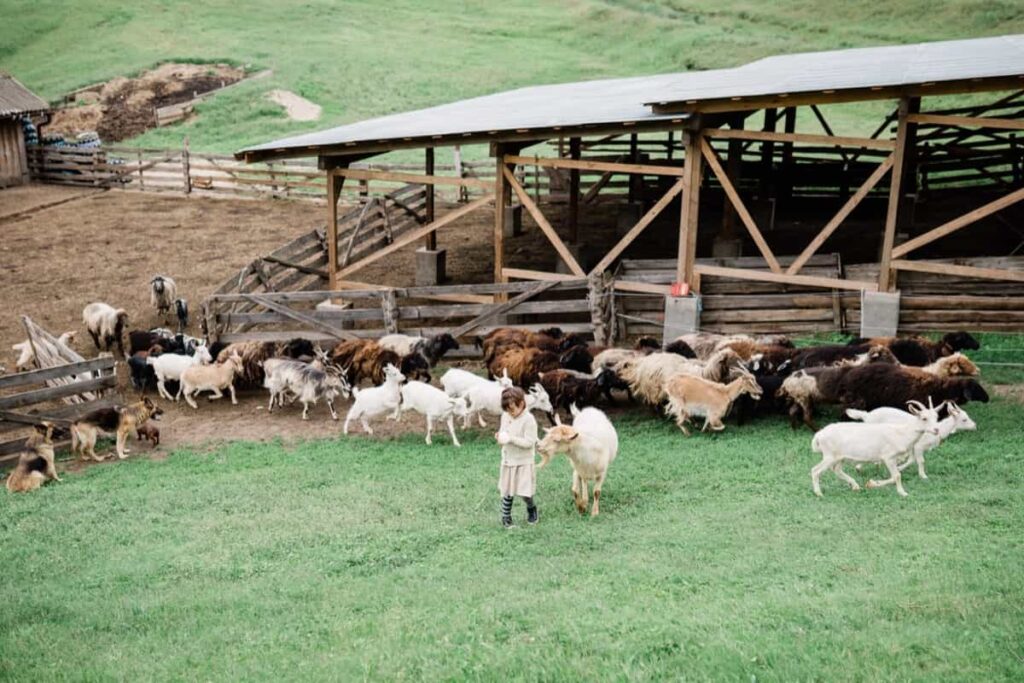
Breeding Goats
In any commercial goat farming operation, the choice of goat breed is the key source of profit and loss. Select goats capable of multiple kidding and have a short gestation period. Commercial goat farming requires one male goat for every 20 female goats. Bring a healthy and robust male for breeding purposes. At the age of 18-20 months, the majority of female goats begin to conceive. In 24 months, goats breed three times.
Advantages of Goat Farming Over Other Livestock Farming
- Goat farming requires little initial investment compared to dairy farming.
- A herd of 6-10 goats is unnecessary when starting a farm. You can start a goat farm with just one goat and gradually grow it into a herd or a large commercial operation.
- In comparison to other animals, goats are more tolerant of bitter tastes. Consequently, they consume almost every plant that other animals do not.
- Due to their careful eating habits, they can live in almost any climate. There are small fat globules in goat milk that are easily digestible. As a result, goat milk is medically recommended for seniors and infants.
- Phosphorus, nitrogen, and potassium are abundant in goat droppings. Therefore, it is an excellent organic manure. Organic farming requires a lot of goat manure.
- In general, goats begin milking at 16-17 months of age.
- It is common for them to produce twins within two years, making them productive breeders. As a result of all the above advantages, goats can be said to yield good economic returns in a short time.
In case you missed it: Common Poultry/Chicken Diseases, Symptoms, and Treatment: Check How this Guide Helps Poultry Farmers
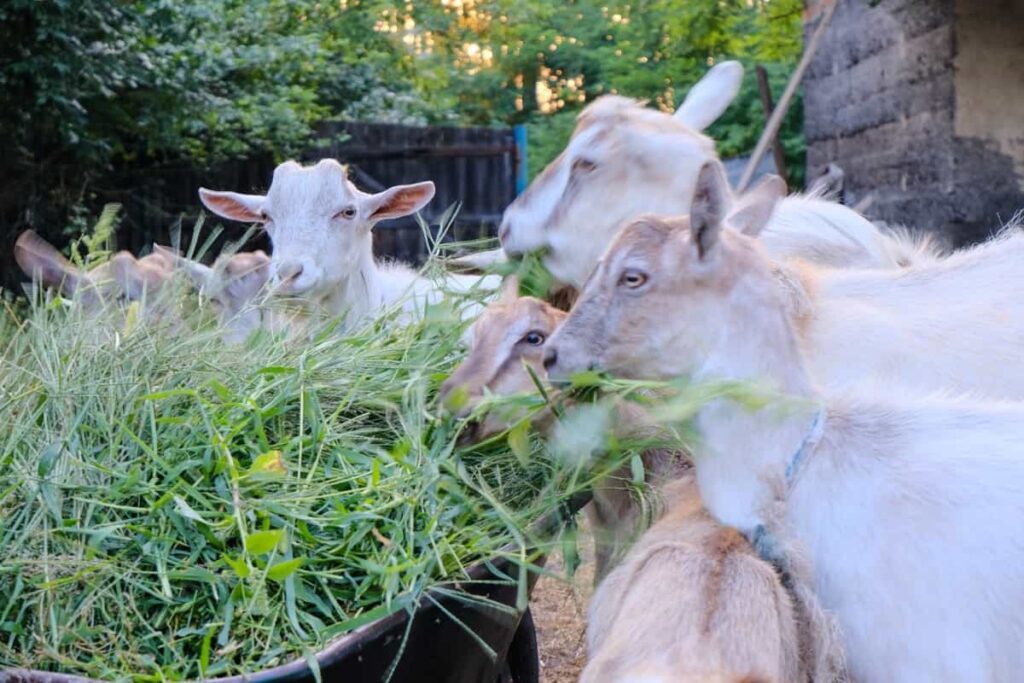
Conclusion
Commercial goat farming has emerged as an important driver of agricultural growth in India. Commercial goat farming has a huge opportunity in rural development as goat has the potential for export of products, capital storage, household income, and employment. Compared with cows and other livestock, goats are relatively easy to maintain, especially if you have a couple. In any drought condition, the goats can sustain. Goat farming in India is always a profitable business.
- How to Raise Pigs in Your Own Backyard: A Comprehensive Guide
- Budget Friendly Sheep Shed Ideas: Cheap and Low-Cost Tips
- How Much Do Cattle Farmers Make: Revenue Streams in Cattle Farming
- Management Pests and Diseases in Your Cotton Field
- Sheep Farming Business Plan for Beginners
- Aquaponic Farming at Home: A Step-By-Step Guide
- Profitable Village Farming Business Ideas in 2024
- High-Yield Aquaculture: Fast-Growing Fish for Farming
- Effective Fish Pond Construction Techniques for Beginners
- Irrigation and Water Management in Pineapple Farming
- Blossom to Harvest: Mastering Flowering and Pollination in Papaya Farming
- Pig Fattening Essentials: From Selection to Sale for Beginners
- Raising Wagyu Cattle: A Complete Guide for Premium Beef Production
- Soil Types and Their Water Holding Capacity
- Optimizing Irrigation Schedules for Coconut Groves for Enhanced Yield
- Espresso Your Garden: Coffee Grounds for Healthier Acid-Loving Plants
- The Best Soil Mix for Snake Plants: How to Mix Your Own Snake Plant Soil
- Green Thumb Success: Expert Tips for Cultivating Greenhouse Beans All Year Round
- Bloom All Year Round: The Ultimate Guide to Indoor Hyacinth Care
- Eco-Friendly Gardening: How to Make Liquid Fertilizer from Kitchen Waste
- Ultimate Guide to Grow Anise in Pots: Explore Seed Propagation to Harvesting
- Guide to Raising Chester White Pigs: Discover Breed Facts to Growth Management
- Mastering the Elegance: The Ultimate Guide to Weeping Cherry Tree Care, Planting, and Maintenance
- Ultimate Guide to Planting Garlic in Grow Bags: Growing Strategies for Beginners
- How to Fix Spider Plant Leaf-Related Problems: Natural and Organic Remedies
- 10 Reasons Why Your Tulsi Plant is Shedding Leaves: Home Remedies and Solutions
- Optimizing Growth and Yield: The Advantages of Palm Bunch Ash Fertilizer
- Utilizing Neem Oil Extract as a Natural Pesticide for Hydrangea
- From Soil to Harvest: Various Ways in Which Farmers Can Use AI Tools
- Steps to Encourage and Induce Citrus Flowers: A Comprehensive Guide
- How to Fix Snake Plant Leaf-Related Issues: Natural and Organic Remedies
- Transform Your Garden into a Fragrant Oasis with Raat Ki Rani (Night Blooming Jasmine)
- Discover the Ideal Chicken Breeds for Philippine Farms
- How to Create a Poultry Egg Farm Business Plan for Profits
- Grow Lemon Cucumbers Like a Pro: Insider Techniques for Bountiful Yields
- Ultimate Guide to Caring for Your Pink Princess Philodendron: Tips for Thriving Variegation
